Metal Gear Solid Delta Review: Snake Eater, a great remake that won't please everyone

Metal Gear Solid 3: Snake Eater is arguably one of the most beloved games in Konami's saga. Praised for its innovative approach, particularly in terms of stealth and survival, this 2004 installment is back in the spotlight with a remake titled Metal Gear Solid Δ: Snake Eater, still being developed by the Japanese publisher.
First officially announced in May 2023, MGSΔ is the second Metal Gear game to be developed following the departure of its long-time designer, Hideo Kojima, in 2015.
Returning with a remake of MGS3 is therefore a low-risk way to bring the Metal Gear franchise back to the eyes of gamers, disillusioned since the commercial failure of Metal Gear: Survive in 2018. Has Konami succeeded in its gamble, or is MGSΔ presenting itself as another video game misfortune? We were able to test this new title, and our opinion is divided.
|
|
Despite the term "remake," associated with Metal Gear Solid Δ: Snake Eater, Konami's new game is more of a remaster. In fact, the Japanese publisher has chosen to copy and paste the original storyline of MGS3, released in 2004, in every detail. The plot remains unchanged, no doubt to arouse a certain nostalgia among players.
As in MGS3, MGSΔ allows the player to play as Naked Snake, an American agent infiltrated into Russian territory during the Cold War in order to sabotage the development of a nuclear-powered weapon capable of triggering a Third World War.
It goes without saying that MGSΔ is very faithful to the original game. Everything, even the most trivial details, are reused in the "remake." Let's first mention the cutscenes, which adopt the same camera shots, although sometimes outdated. Let's also mention the voiceovers, unchanged. Finally, let's conclude with the fades to black, omnipresent during the cutscenes and Naked Snake's missions in the Russian jungle.
Without a doubt, MGSΔ is aimed squarely at players who played MGS3 in 2004. Despite the outdated nature of the original plot, Konami has copied its twists, turns, and themes exactly. The Japanese publisher is partially committed to this loyalty, stating in the game's introduction that some of the themes discussed in the story may be misunderstood in the contemporary world.
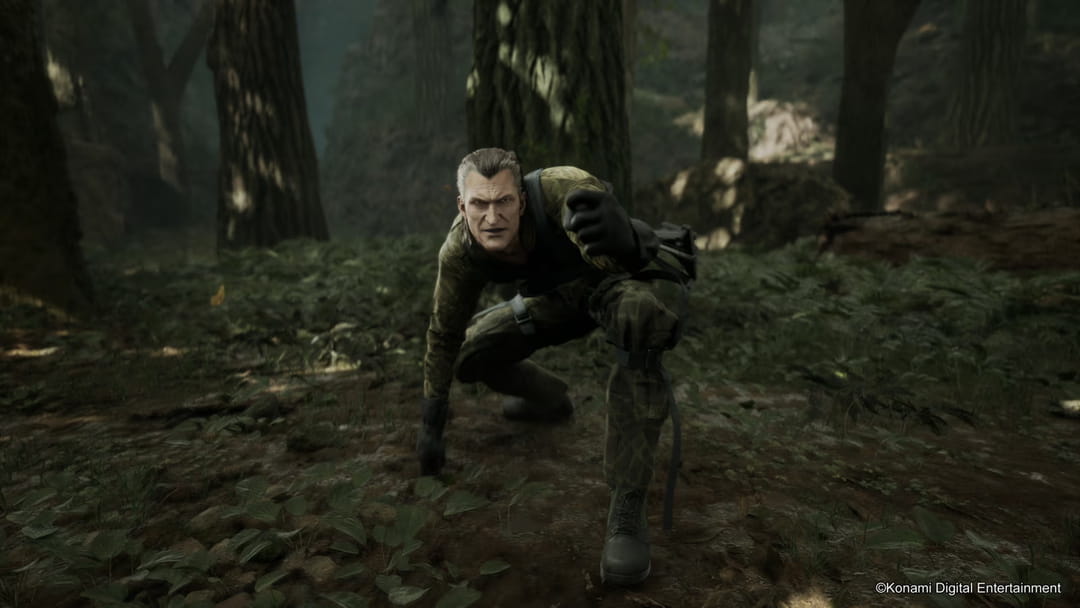
The antagonists (and even the protagonists) of MGS3 therefore still retain in MGSΔ this caricatured and theatrical side that we no longer necessarily find in contemporary games. With their Machiavellian laughter and their malicious ambitions, the villains become grotesque, even if Konami's objective is clearly to rely on the nostalgia of the players.
Greatly improved but still imperfect graphicsMetal Gear Solid Δ's greatest asset lies primarily in its graphics. While Konami has focused on absolute fidelity, the game has undergone a major visual overhaul. The gaming world has evolved significantly in 21 years, and the PS5's graphics are incomparable to those of the PS2.
MGSΔ runs on Unreal Engine 5, a state-of-the-art video game engine capable of displaying intricate details and managing a more realistic lighting system than ever before. This new technology is felt once you pick up the controller. It's clear that MGSΔ is a beautiful game, even more so when compared to its predecessor.
The environments are very detailed, especially outdoors. Leaves rise as you walk, grass bends if you brush against it... The grain of the skin, the texture of the hair, and even the composition of the tissues are perfectly realized. Natural elements like rocks, trees, and grass are very convincing, even if the overall effect is difficult to impress.
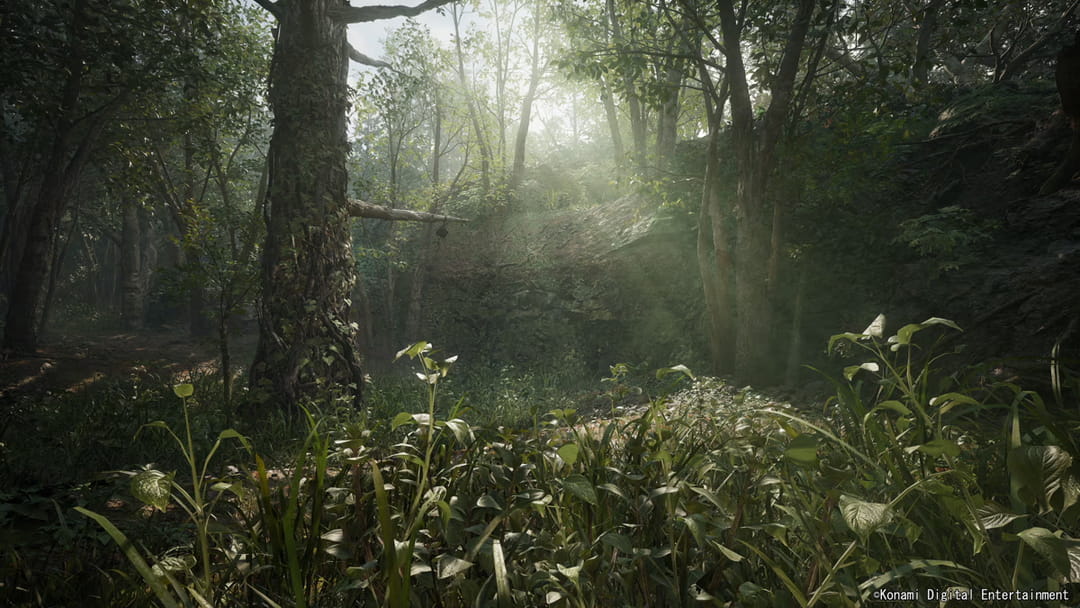
MGSΔ's scenery is never particularly beautiful, probably due to Konami's decision to remain faithful to the original game maps, which were designed based on the performance of the consoles of the time. The interiors are even less immersive, the lighting seems artificial and the graphics are strangely less polished.
MGSΔ's motion design is even more lacking, with the faces retaining a "plastic" feel that leaves no room for realism. The gazes seem empty and the facial expressions rather frozen. Compared to MGS3, we can only highlight the graphical evolution.
Rare new features for a game that is still oldDespite Konami's absolute loyalty to MGS3, Metal Gear Solid Δ seeks to modernize its gameplay by offering two game modes just before the game's launch. One mode retains the camera controls of the era and another introduces a certain modernity, with an over-the-shoulder view. A proposition that seeks to satisfy everyone: veterans and newcomers alike.
Despite the gameplay upgrades, MGSΔ remains difficult to manipulate. Controlling Naked Snake can be confusing at times. This is especially true when leaning against a piece of scenery to hide. Instead of sticking to the structure, Naked Snake can skate and remain crouched in the middle of a corridor.
Another annoying control issue: the protagonist keeps lying on the floor after taking a hit. Snake then decides to crawl on the floor: we barely try to get him back on his feet when another hit makes him lie down against the tiles. We would also have appreciated the protagonist having the ability to run or swim quickly, since it can sometimes take a long time to cross a place.
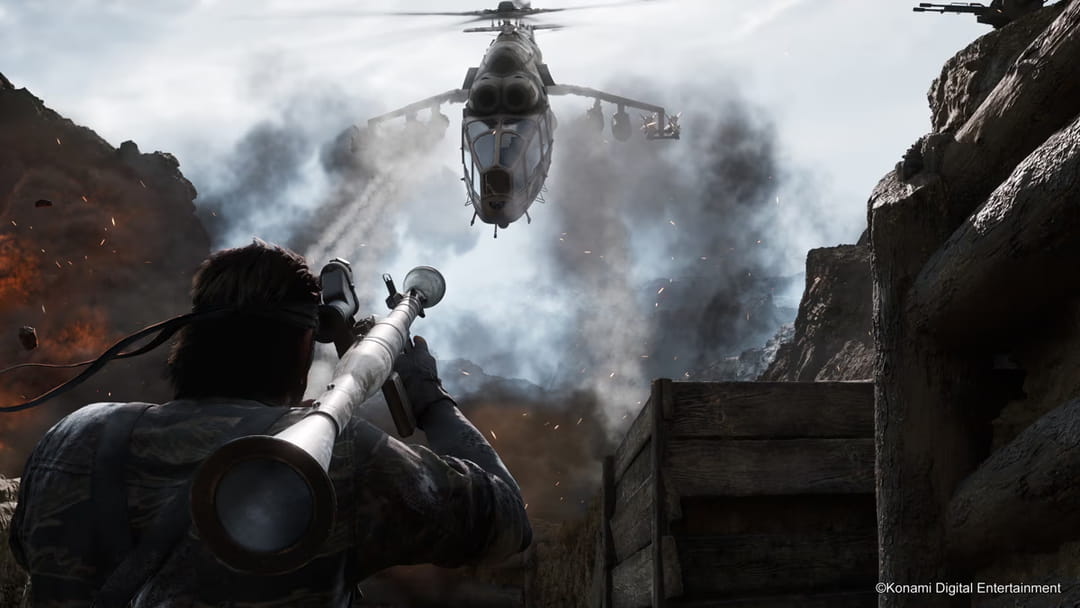
The camera is also a major flaw in MGSΔ, due to its awkward and vintage feel. Note that while the over-the-shoulder view is omnipresent, it is often disrupted by a first-person perspective. Aiming a weapon, crawling, swimming... many actions suddenly change the player's point of view, and in an awkward manner.
Sought-after combat tacticsLike the good old Metal Gear Solid 3, Metal Gear Solid: Δ relies heavily on Naked Snake's stealth and discretion. The player still has a wide range of items and weapons at his disposal to infiltrate buildings without arousing suspicion. Clearly, the stealth aspect is very enjoyable, although challenging.
MGSΔ allows the player to constantly change Naked Snake's camouflage, so that he blends into the different environments. However, even hidden in ferns or high in trees, enemies can still spot you. Hiding is very difficult, especially since opponents don't have a gauge: once they see you, you're spotted by everyone.
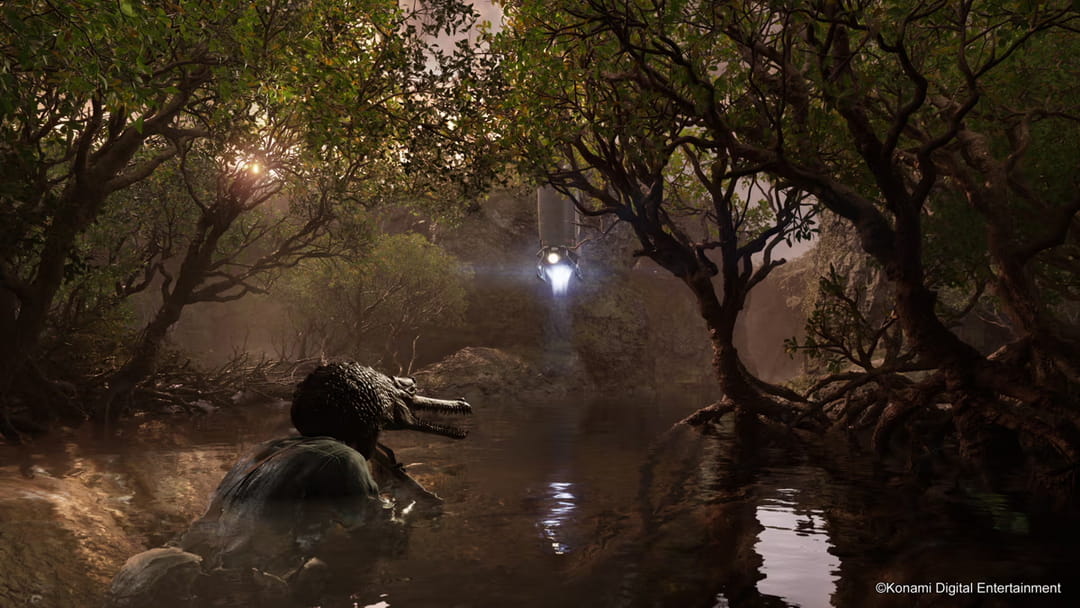
Since the game maps are identical to those of MGS3, newcomers will rightly criticize certain flaws in the game's various areas. Konami hasn't transformed any environments, much to the delight of veterans, thus preserving countless short corridors interrupted by fades to black. The Japanese studio has decided to sequence its game maps as they did back in the day: each passage to another area requires a loading time of a few seconds.
Most of MGSΔ's maps are combat zones. Suffice it to say that while they're full of hiding places and well-designed, confronting enemies isn't necessarily a piece of cake. The AI is ridiculous and far from realistic. Their behavior is very robotic and stupid, regularly breaking the player's immersion. The latter is also often disrupted by the enemies' bodies, which sometimes disappear, sometimes opting to remain on the ground indefinitely.
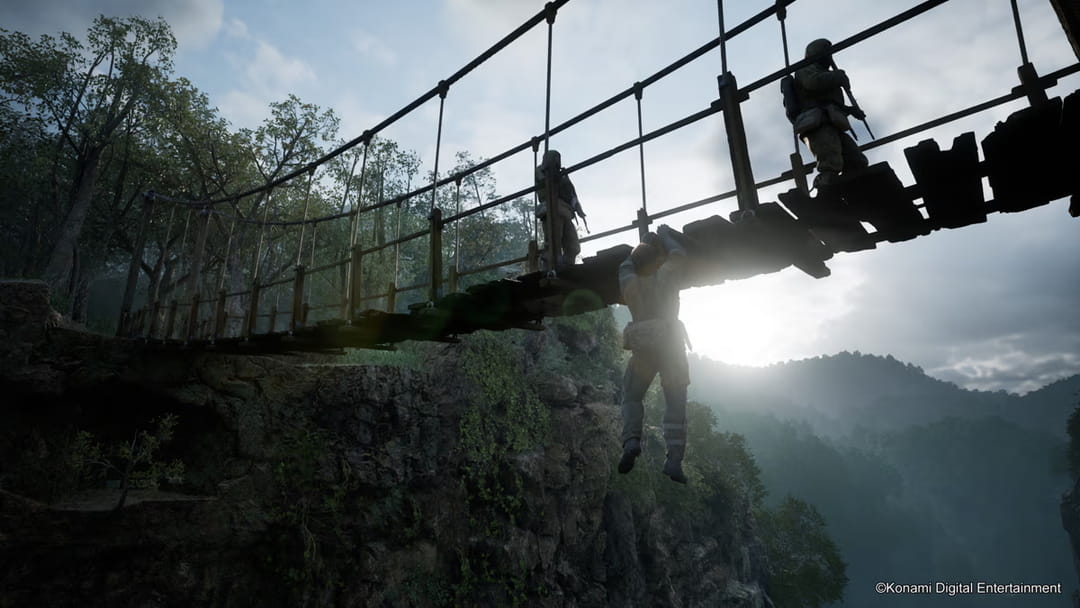
The enemies all have similar faces, even though they're clearly not twin brothers. Despite Konami's desire to be faithful, they could have developed different facial features to avoid redundancy and a vintage feel. Still, there are some very nice details scattered throughout the game during combat: notably the wounds left on Snake's body during your game, enemies limping after being shot in the leg, or the perfect responsiveness of the windows when you shoot them.
Because the tools used in Naked Snake are so varied and numerous, each player can complete a mission using their own unique strategy. This unique aspect is extremely enjoyable.
During our testing, we encountered a few bugs, such as a mission that remained unresolved despite having achieved and completed objectives. These issues, however, remain rare.
A "survival" dimension that is always so enjoyableAs was the case in Metal Gear Solid 3, Metal Gear Solid Δ incorporates a very accomplished survival dimension, forcing the player to scavenge for their own food. Hunger is a key element of the game, with Naked Snake experiencing rumbling stomach sounds if it's not full, in which case your position can be spotted by enemies.
MGSΔ allows you to hunt and gather countless foods with varied functions. Some plants can provide means of healing the character in case of injury or poisoning.
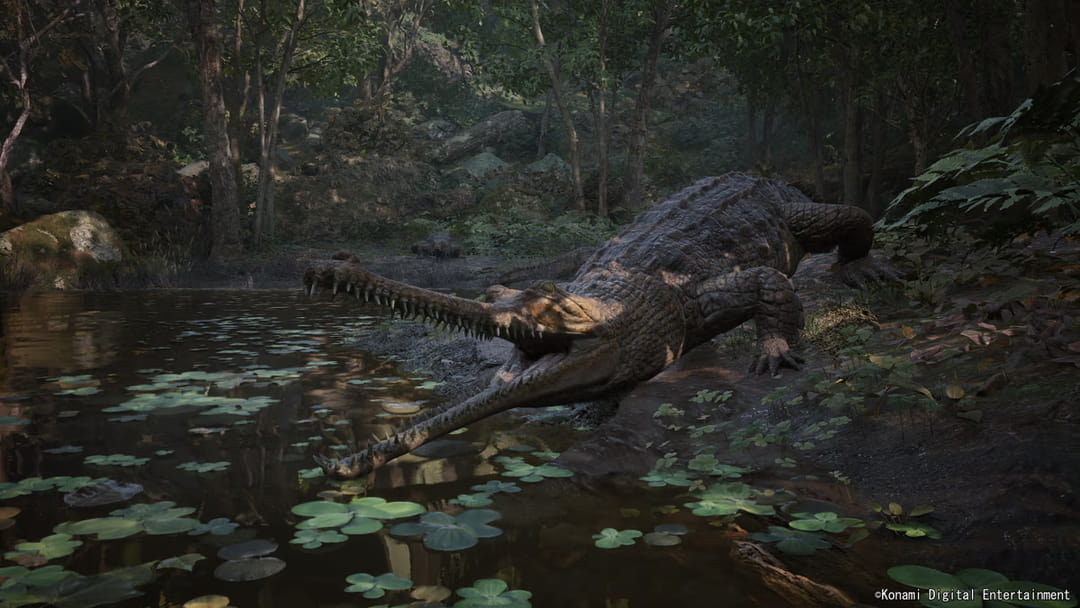
Once again, Konami hasn't retouched this food system, even if it means leaving it as vintage and outdated as the rest of the game. It would have been appropriate to modernize the behavior of animals, like crocodiles or rabbits, which don't run away or attack you when you stab them. The animals stay in place, motionless, simply letting out simple roars of pain.
Thus, Metal Gear Solid Δ is a copy-paste of its 2004 ancestor, Metal Gear Solid 3. Despite a successful visual overhaul, although it could be improved in certain areas of the game, Konima's new game remains identical in terms of gameplay and storyline.
It's only logical that this absolute fidelity gives rise to a certain obsolescence once the controller is in hand. If Metal Gear Solid 3 was an innovative and appreciated game in the early 2000s, its descendant of 2025 risks appealing only to veteran players. Newcomers will surely point out the vintage character of this "remake", as much in terms of the battle maps, the controls and the characters.
The gaming experience is unparalleled in terms of nostalgia, but few new players will be able to find in MGSΔ the splendor that characterized MGS3 in its time.
L'Internaute




